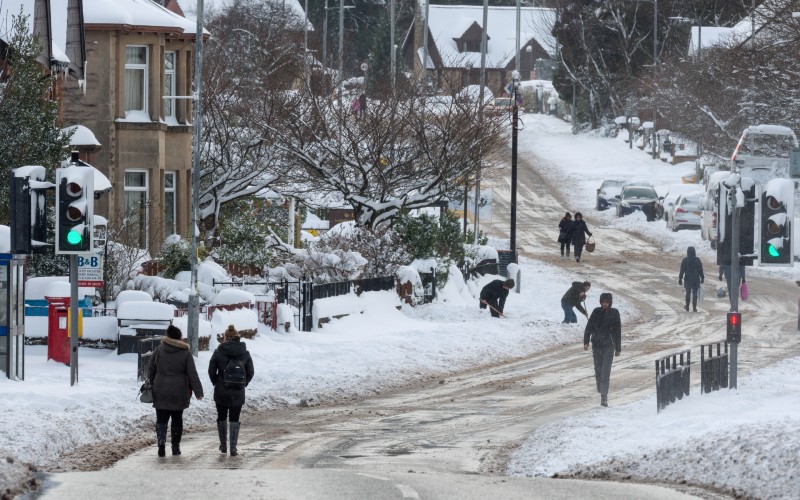
As another Scottish winter approaches, drivers are encouraged to consider road conditions in an effort to prevent any unwanted car accidents.
Snow and unpredictable weather can significantly increase the risk of road traffic accidents, and icy roads can become treacherous for drivers, making it essential to understand the hazards that come with the season and the risks involved with winter driving.
Having seen first hand the unfortunate aftermath of avoidable road traffic accidents, here are some practical tips to help you stay safe while driving in winter conditions.
Prepare Your Vehicle for Driving in Winter
First and foremost, ensure that your vehicle is winter-ready, as this will help you to move off on a snowy surface. This includes checking your tyre tread depth and ensuring that you have the right tyres for winter conditions, such as “all-season” tyres with good grip. Tyre pressure can also drop in colder temperatures, so make it a habit to check your tyre pressure regularly.
Use Winter Screenwash for Improved Visibility
Likewise, you should make sure to keep your windshield wipers in good condition and fill your windshield washer fluid with a winter formula to improve visibility when driving in snowing and icy weather. Poor road conditions, such as potholes, can also increase driving risks during winter.
Using Your Vehicle’s Engine to Control Your Speed
When driving on icy roads, it’s important to understand how to use your vehicle's engine to control your speed. Lower speeds provide more time to react to sudden changes in icy road conditions or traffic. Driving in a higher gear can help avoid wheelspin when you're driving on an icy road. Avoid sudden acceleration and deceleration; instead, make gentle, gradual movements with the steering wheel and pedals.
How to Prevent Skidding on Icy Roads
If you find yourself skidding, remember to remain calm and steer in the direction you want to go, rather than jerking the wheel in the opposite direction. Also consider the time gap between cars as the stopping distance in icy conditions is significantly increased, so allow plenty of space between your vehicle and the one ahead, giving you ample time to stop safely.
Dealing with Winter Sun and Low Visibility
Sunlight can also be a significant hazard in winter driving, particularly when the sun is low in the sky. To combat being dazzled by sunlight, keep your windshield clean both inside and out, as dirt can amplify glare. Consider using polarised sunglasses to reduce glare in bright conditions.
Additionally, during times when the sun is directly in front of you, be particularly alert for changes in traffic and road conditions, as your visibility may be compromised and could contribute to pedestrian injuries.
Essential Preparation for Driving in Snow and Ice
Lastly, stay informed about weather forecasts and winter road conditions before starting your journey. If conditions are particularly severe, consider delaying your trip if possible.
Understanding how to drive safely in winter includes carrying emergency supplies in your car - such as a blanket, flashlight, snacks, and a first-aid kit - can be beneficial in the event of unexpected delays or accidents.
For further advice on road safety, our article on safety matters as clocks change helps you to further prepare for changing conditions.
Winter Driving Safety Checklist
- Ensure your car is winter ready, including checking tyre tread depth
- Drive at lower speeds to increase response time
- Use appropriate gears for winter driving
- Maintain safe stopping distances for icy road conditions
- Keep your windshield clean both inside and out
- Consider using polarised sunglasses to protect against Sun glare
- Check weather conditions and road reports
- Keep emergency supplies ready in the event of an emergency
Make sure to also stay up to date with the latest highway code rules on winter driving.
Summary - Safe Driving Tips for Winter
Driving in winter can pose challenges, but through preparation and awareness of winter driving, you can navigate the roads safely. Whether you're dealing with ice on roads or learning how to drive in snowy conditions, taking a few extra precautions can make a world of difference - so buckle up, slow down, and drive smart this winter season.
If you are involved in a road traffic accident over the winter and suffer an injury like whiplash or neck and back pain as a result, Thorntons can help with legal advice and no win, no fee personal injury claims. Speak to our specialist team on 0800 731 8434.
